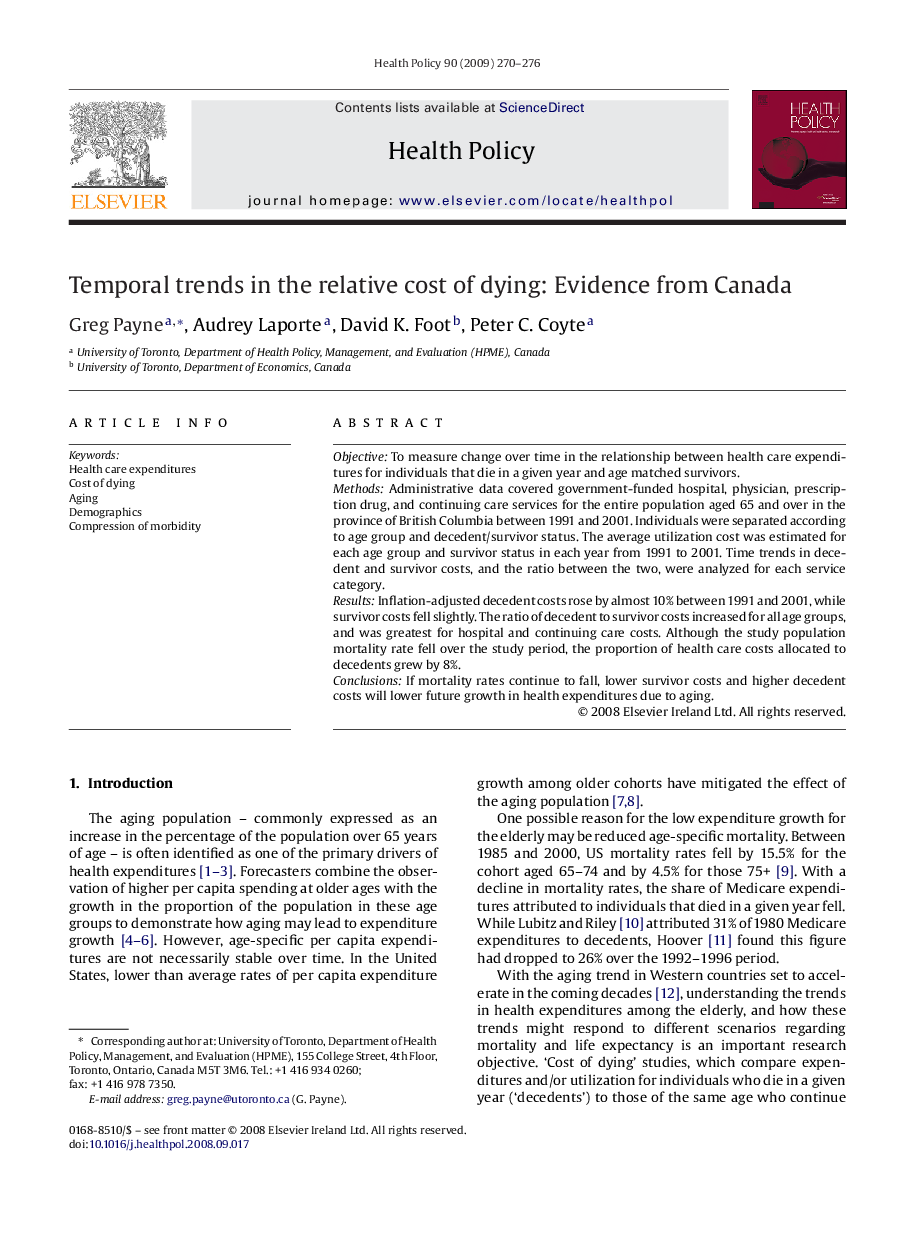| Article ID | Journal | Published Year | Pages | File Type |
|---|---|---|---|---|
| 4198503 | Health Policy | 2009 | 7 Pages |
ObjectiveTo measure change over time in the relationship between health care expenditures for individuals that die in a given year and age matched survivors.MethodsAdministrative data covered government-funded hospital, physician, prescription drug, and continuing care services for the entire population aged 65 and over in the province of British Columbia between 1991 and 2001. Individuals were separated according to age group and decedent/survivor status. The average utilization cost was estimated for each age group and survivor status in each year from 1991 to 2001. Time trends in decedent and survivor costs, and the ratio between the two, were analyzed for each service category.ResultsInflation-adjusted decedent costs rose by almost 10% between 1991 and 2001, while survivor costs fell slightly. The ratio of decedent to survivor costs increased for all age groups, and was greatest for hospital and continuing care costs. Although the study population mortality rate fell over the study period, the proportion of health care costs allocated to decedents grew by 8%.ConclusionsIf mortality rates continue to fall, lower survivor costs and higher decedent costs will lower future growth in health expenditures due to aging.
